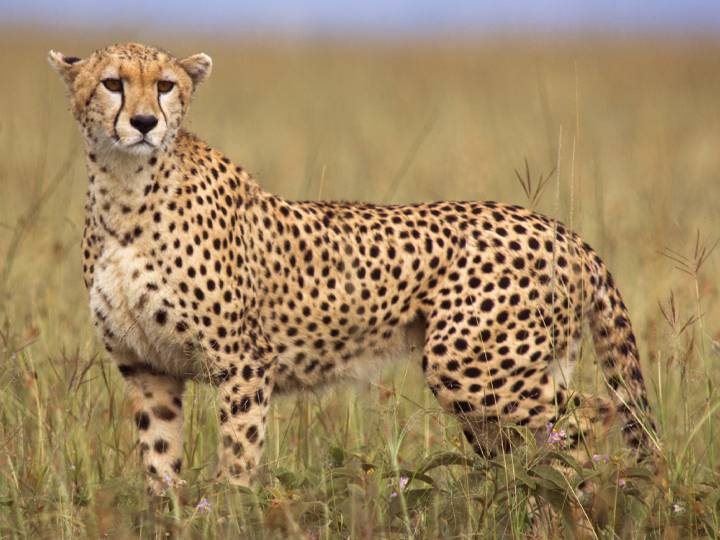African Cheetah Genome Project

Dobrynin’s research consisted of large amounts of genetic data, and throughout the webinar he explained the technology that made organizing this data possible.
Dobrynin recently started his postdoctoral position at the University of Houston in the Psychology department. However, prior to his role at UH, Dobrynin talks about being a research geneticist focused on genomics. Dobrynin cites that the African Cheetah genome project started in 2012, and is, to date, the biggest project that he has ever completed.
The African Cheetah genome project was one that built off the research of other scientists. Dobrynin describes an experiment conducted during prior research, in which the skin of one cheetah was removed and grafted onto the skin of another cheetah. Typically, the body of the cheetah that received the foreign skin would reject the graft, but this cheetah’s body accepted the foreign skin. From this finding, researchers deduced that cheetahs may have identical immune systems.
This potentiality is the impetus behind Dobrynin’s research, as the low genetic variation in the African Cheetah population makes them susceptible to extinction from diseases or illnesses. He cites an example from a coronavirus outbreak at the Oregon zoo in the 1980’s that had an extreme effect on the African Cheetah population.
The majority of the webinar consisted of Dobrynin demonstrating the complex process that it took to compare the genome data of each cheetah, as well as the genome data of the cheetah species to other species, such as house cats. Dobrynin compared this data to deduce that the low genetic variation amongst cheetahs is unique to their species.
Comparing genetic data to the extent that Dobrynin did can often be a hefty load, often unimaginable without machines because of the numerous DNA base pairs. To organize, manage and compile his data, Dobrynin used “data sequencing machines,” such as the “Illumina HiSeq2000 Data Sequencing Machine.”
Dobrynin took the webinar viewers through the entire process of data usage, from post- collection toanalysis. He described the process of arranging the data collected on each individual cheetah into “libraries,” using machines to sequence the data, and then using processes such as Kmer analysis to resequence the data. He mentions using technology, such as RepeatMasker and WindowMasker again in the process, in order to Mask repetitive elements in the cheetah scaffolds.
Dobrynin’s research on African Cheetah genomes has shown that machine-assisted data science research has made research on a larger scale feasible.